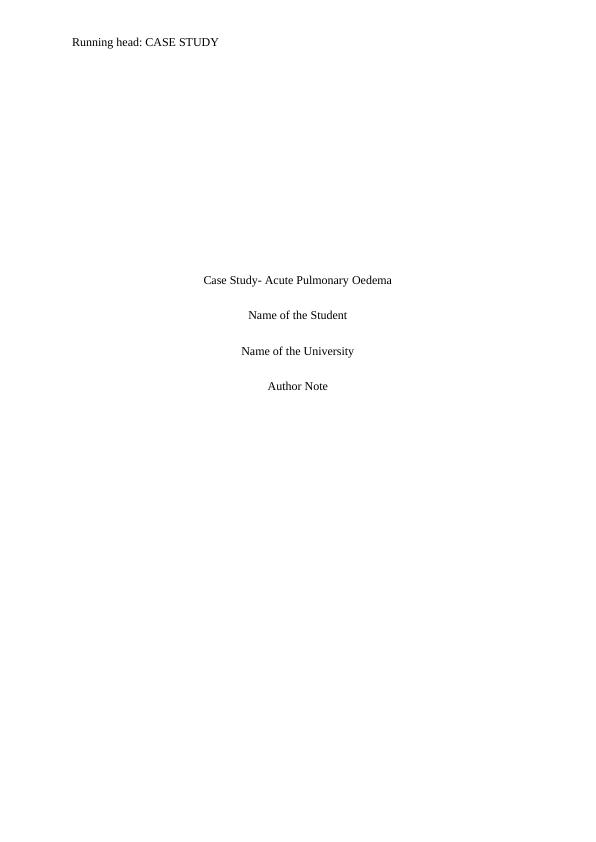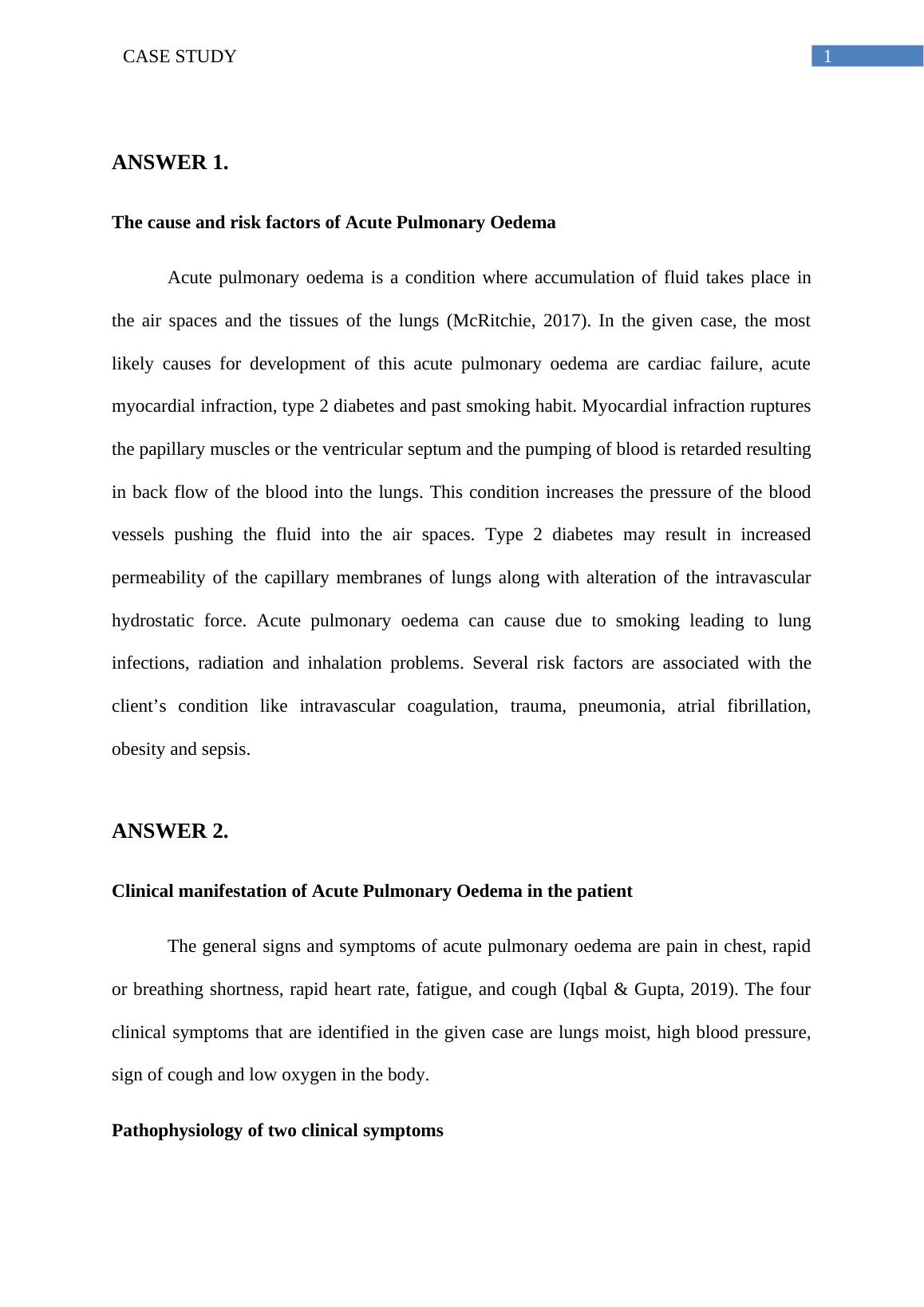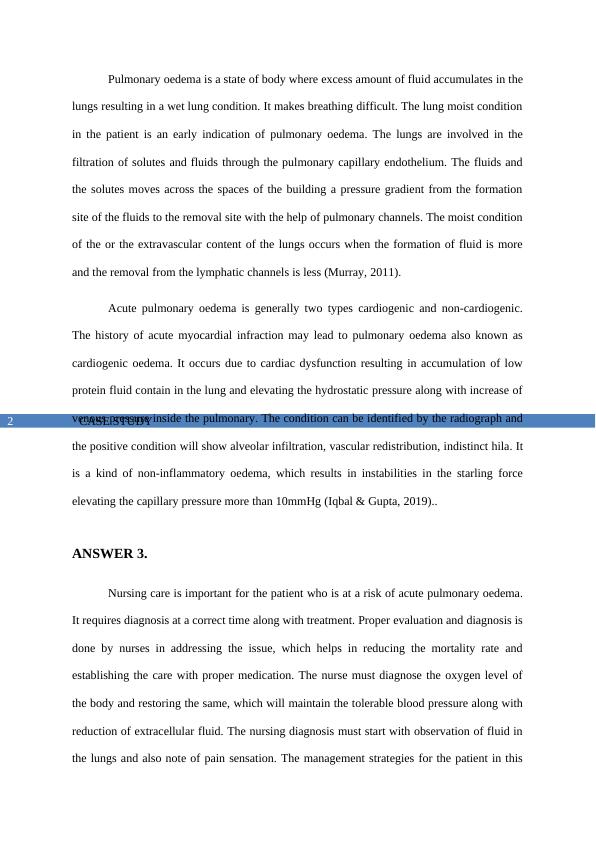Acute Cardiogenic Pulmonary Edema Case Study Pdf 2022
Additional notes related to Mary Ambrosia: Just had appendix removed, breathing fast, oxygen low, lungs a bit moist sounding, sats at 90%, respiratory rate 24 breaths per minute, AMI 5 years ago (heart attack), blood pressure 156/92, no chest pain, has a cough, medical team called for assessment.
7 Pages1538 Words36 Views
Added on 2022-08-25
Acute Cardiogenic Pulmonary Edema Case Study Pdf 2022
Additional notes related to Mary Ambrosia: Just had appendix removed, breathing fast, oxygen low, lungs a bit moist sounding, sats at 90%, respiratory rate 24 breaths per minute, AMI 5 years ago (heart attack), blood pressure 156/92, no chest pain, has a cough, medical team called for assessment.
Added on 2022-08-25
ShareRelated Documents
End of preview
Want to access all the pages? Upload your documents or become a member.
The Symptoms of AIHF
|8
|1779
|33
Causes, Manifestations, and Management of Acute Pulmonary Oedema
|6
|1353
|98
Cardiogenic Shock and Heart Failure: A Case Study Assessment
|10
|3377
|26
Nursing Case Study: Patho-physiology, Investigations, Pharmacology
|13
|3177
|71
Case study on Adult Assignment
|12
|3852
|155
Diploma of Nursing: Clinical Scenarios and Nursing Care Plan
|12
|2030
|423



